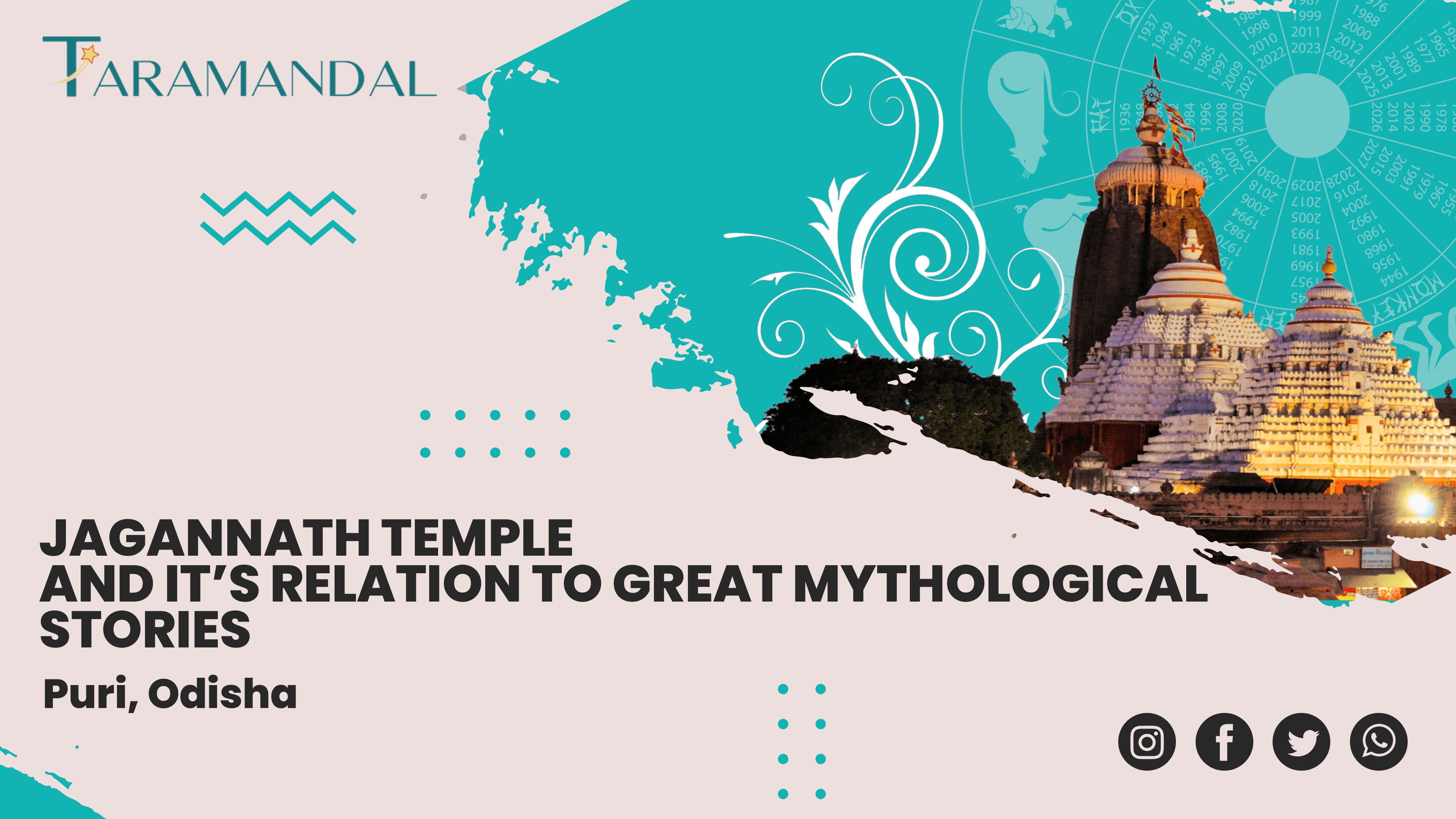on 2 years ago
Jagannath Temple, Puri, Odisha, and Its Relation to Great Mythological Stories
Introduction
The Jagannath Temple, located in Puri, Odisha, is one of the most revered and ancient temples in India. It holds great significance in Hindu mythology and is dedicated to Lord Jagannath, an incarnation of Lord Vishnu. The temple is not only a place of worship but also an architectural marvel, attracting millions of devotees and tourists every year. In this article, we will explore the historical background, mythological stories, architecture, rituals, and spiritual importance of the Jagannath Temple.
Historical Background of Jagannath Temple
The Jagannath Temple has a rich historical background that dates back to the 12th century. It was built by King Anantavarman Chodaganga Deva of the Eastern Ganga dynasty. Over the centuries, the temple has undergone several renovations and expansions, contributing to its grandeur and magnificence.
Significance of Jagannath Temple in Hindu Mythology
Story of Lord Jagannath
According to Hindu mythology, Lord Jagannath is considered the Lord of the Universe. The legend goes that Lord Krishna, along with his brother Balarama and sister Subhadra, resides in the Jagannath Temple in Puri. The deities of Lord Jagannath, Balarama, and Subhadra are unique as they are made of neem wood and are replaced every twelve years in a grand ritual known as the "Nabakalebara."
The Chariot Festival (Rath Yatra)
The Rath Yatra, or the Chariot Festival, is one of the most significant annual events celebrated at the Jagannath Temple. During this festival, the deities of Lord Jagannath, Balarama, and Subhadra are placed on magnificent chariots and pulled by thousands of devotees through the streets of Puri. The festival symbolizes the journey of Lord Jagannath to visit his aunt's house.
Legends associated with the temple
The Jagannath Temple is also associated with various fascinating legends. One such legend is the story of the divine mango. It is said that Lord Krishna once craved a particular variety of mango, and to fulfill his desire, his devotee, Santoshi Maa, obtained the mango from Indra, the king of gods. However, Indra's wife, Saci, tried to steal the mango, resulting in a chase that led them to the Jagannath Temple.
Architecture and Design of Jagannath Temple
The architecture of the Jagannath Temple is a testament to the skill and craftsmanship of the ancient Odishan architects. The temple complex is vast and encompasses several smaller temples dedicated to various deities. The main temple, with its towering spire, intricately carved walls, and elaborate sculptures, is a marvel to behold.
Temples within the complex
Apart from the main temple dedicated to Lord Jagannath, there are several other shrines within the temple complex. These include the temples of Goddess Bimala, Lord Ganesh, Goddess Sarvamangala, and many others. Each temple showcases unique architectural styles and designs.
Unique features of the architecture
The architectural style of the Jagannath Temple combines elements of the Kalinga, Dravidian, and Nagara architectural styles. The main spire, known as the "Deula," is a prominent feature and stands tall over the temple complex. The walls of the temple are adorned with intricate carvings depicting scenes from Hindu mythology.
Rituals and Practices at Jagannath Temple
The Jagannath Temple is a place of worship where several rituals and practices are carried out daily. Devotees from all walks of life visit the temple to offer their prayers and seek blessings from the deities.
Daily rituals and offerings
Every day, the deities are worshipped with great devotion. Various rituals, such as "Mangala Arati," "Sakala Dhupa," "Sandhya Dhupa," and "Badasinghara Besha," are performed to appease the deities. Devotees offer flowers, fruits, and Prasad (devotional food) to seek the blessings of Lord Jagannath.
Festivals and celebrations
Apart from the Rath Yatra, the Jagannath Temple hosts several other festivals throughout the year. These include Snana Yatra, Chandan Yatra, Anasara, and Naba Kalebara. These festivals attract a massive influx of devotees and tourists who come to witness the grandeur and spirituality associated with these celebrations.
Pilgrimage and Spiritual Importance
The Jagannath Temple holds immense spiritual importance for devotees and pilgrims. It is believed that a pilgrimage to the temple and a glimpse of the deities can bring spiritual enlightenment and liberation from the cycle of birth and death. Devotees undertake long journeys to Puri to seek the blessings of Lord Jagannath and to experience a sense of divine connection.
The Jagannath cult
The Jagannath cult, with its unique rituals and practices, has gained a significant following over the centuries. The teachings and philosophy associated with Lord Jagannath have influenced the lives of millions, fostering love, devotion, and a sense of unity among its followers.
Preservation and Restoration Efforts
The preservation and restoration of the Jagannath Temple have been ongoing endeavors to ensure the longevity of this cultural and religious heritage site. The temple faces challenges due to natural wear and tear, climatic conditions, and the sheer magnitude of devotees visiting daily.
Challenges faced
The preservation of ancient structures like the Jagannath Temple involves constant monitoring and maintenance. Factors like weathering, pollution, and excessive footfall pose significant challenges to the conservation efforts.
Conservation initiatives
To protect and restore the temple, various conservation initiatives have been undertaken by the Archaeological Survey of India and other organizations. These initiatives include regular cleaning, structural repairs, and the use of appropriate materials to maintain the authenticity and grandeur of the temple.
Conclusion
The Jagannath Temple in Puri, Odisha, stands as a magnificent symbol of devotion, architecture, and spirituality. Its rich historical background, mythological stories, and cultural significance make it a must-visit destination for devotees and tourists alike. The temple's grandeur, the divine aura that surrounds it, and the deep-rooted traditions associated with it continue to inspire and captivate people from all walks of life.

